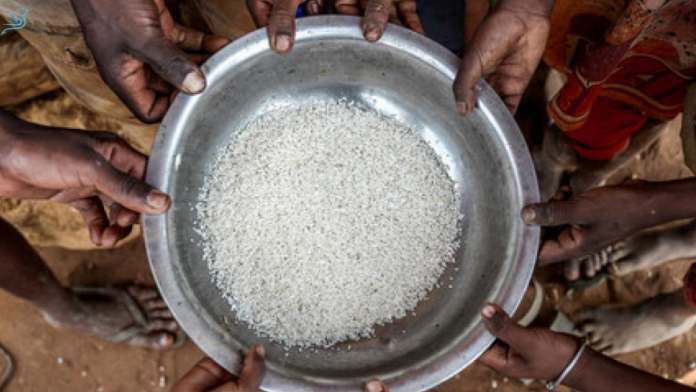Hello Readers!
In today’s blog we will be talking about the Hunger Hotspots Report – August to November 2021. It was released by the Food and Agricultural Organization (FAO) and the World Food Programme (WFP). FAO-WFP warned that hunger is expected to rise in 23 global hotspots across the world.
We will let you know about what the report is, various points mentioned in the report about the hunger situation in the world and other key points.
Let’s start knowing about the Hunger Hotspot Report.
What is the Hunger Hotspot Report?
The FAO-WFP Hunger Hotspots study is a foresight, early warning analysis of nations and situations, known as hotspots, where acute food insecurity is expected to worsen in the next months. These hotspots are determined via a consensus-based examination of important factors of food insecurity, as well as their likely combination and evolution across countries and regions.
Key points in the report
Major Hunger Hotspots –
- Ethiopia and Madagascar are new highest alert hotspots. Due to Madagascar’s worst drought in 40 years, a total of 28 000 people are at risk of starvation by the end of 2021.Between July and September 2021, up to 401 000 Ethiopians are expected to be in Catastrophe, the biggest number since the 2011 Somalia famine.
- Among other countries highlighted South Sudan, Yemen and Nigeria are among the 23 countries where acute food insecurity will worsen from August to November, 2021.
Reasons for food insecurity
Conflict
- Acute hunger is predicted to be driven mostly by conflict, with economic shocks – including secondary effects of the COVID-19 pandemic – and environmental hazard risks also playing a role.
Violence –
- Food insecurity is likely to persist as a result of conflict and other forms of violence. This might occur as a result of population displacement, the abandonment of agricultural land, or the loss of natural resources. Loss of life and property, disruption of trade and crops, and access to the markets
- Violence is expected to intensify in Afghanistan, Ethiopia, Yemen and many more.
Impact of COVID -19
- The COVID-19 pandemic has had a significant influence on the global economy, causing a 3.5 percent drop in global GDP in 2020.
Natural Hazards
- During the outlook period, weather extremes and climatic variability are predicted to strike various parts of the world.
- Reduced rainfall during the main growing season, which concluded in May, is expected to have had an impact on yields in Haiti, while ongoing below-average rainfall is projected to affect yields for the major rice season.
Humanitarian access constraints
- The likelihood of deterioration increases when humanitarian actors’ access to persons in need is restricted. Access to humanitarian aid is restricted in a number of ways: mobility restrictions, administrative or bureaucratic stumbling blocks; Constraints in terms of security and physical accessibility environment.
Other countries of highest concern
Hotspot countries of immediate concern include Afghanistan, the Democratic Republic of the Congo, and Haiti, as well as Sudan and the Syrian Arab Republic. Over one million people are estimated to be suffering from critical acute food insecurity in each of these countries.
Recommendations
- To distribute drought tolerant crop seeds to farmers and livestock protection kits with veterinary support.
- Increase food system climate resilience by providing smallholder farmers with widespread access to climate risk insurance and forecast-based finance.
- Increase the climate resilience of the food system by making climate risk insurance and forecast-based funding widely available to smallholder farmers.
- Diversify supply routes in areas where there are frequent disputes in order to provide humanitarian assistance.
India in Ensuring Food Insecurity
Rashtriya Krishi Vikas Yojana (RKVY)
It was initiated in 2007 to make farming a remunerative economic activity by strengthening farmers’ efforts, risk mitigation and promoting agri-business entrepreneurship.
National Food Security Mission
The National Food Security Mission (NFSM) was established in 2007-08 with the goal of increasing rice, wheat, and pulses production through (i) area expansion and productivity enhancement, (ii) soil fertility and productivity restoration, (iii) job creation, and (iv) improving farm level economy.
One Nation One Ration card
This will contribute to the achievement of SDG 2’s goal of ending hunger by 2030. It would also address India’s poor hunger situation, as emphasized by the Global Hunger Index, which ranks India 102 out of 117 countries.
The National Food Security Act, 2013
Under the Targeted Public Distribution System, the Act allows up to 75 percent of the rural population and 50 percent of the urban population to receive subsidized food grains. As a result, around two-thirds of the population is eligible to receive heavily subsidized food grains as a result of the Act.
The eldest woman of the home of 18 years or older is required to be the head of the household as a step towards women empowerment.
About Food and Agricultural Organization (FAO)
FAO is a specialized agency of the United Nations founded in 1945.
World food day is celebrated on 16th October to mark the formation of FAO.
Its objective is to help in eliminating hunger, food insecurity and malnutrition.
About World Food Programme (WFP)
It was founded in 196. WFP is the world’s largest humanitarian organization saving lives in emergencies and uses food assistance to ensure peace, stability and prosperity.
It was awarded the Nobel Peace Prize 2020 for its efforts to tackle hunger.
To summarize we covered all the major points discussed in the Hunger Hotspots Report – August to November 2021. We came to know that different parts of the world are suffering through acute hunger issues. Recently The State of Food Security and Nutrition in the World 2021 was released highlighting the hunger and food insecurity conditions across the globe. Read our blog to know about it.




